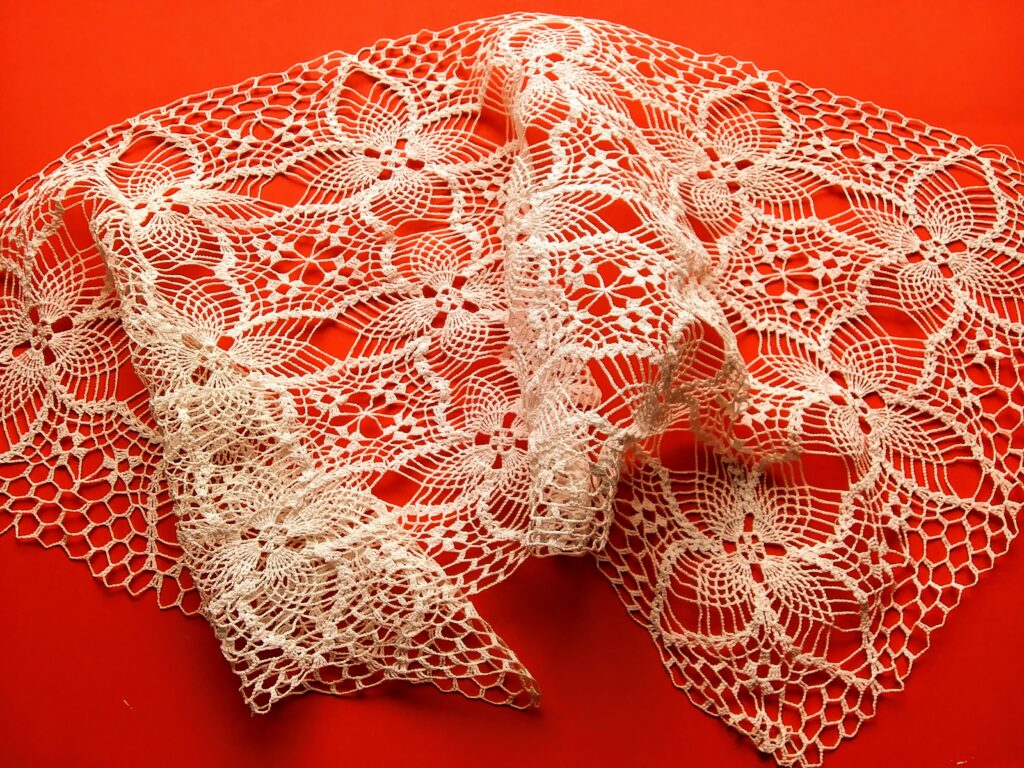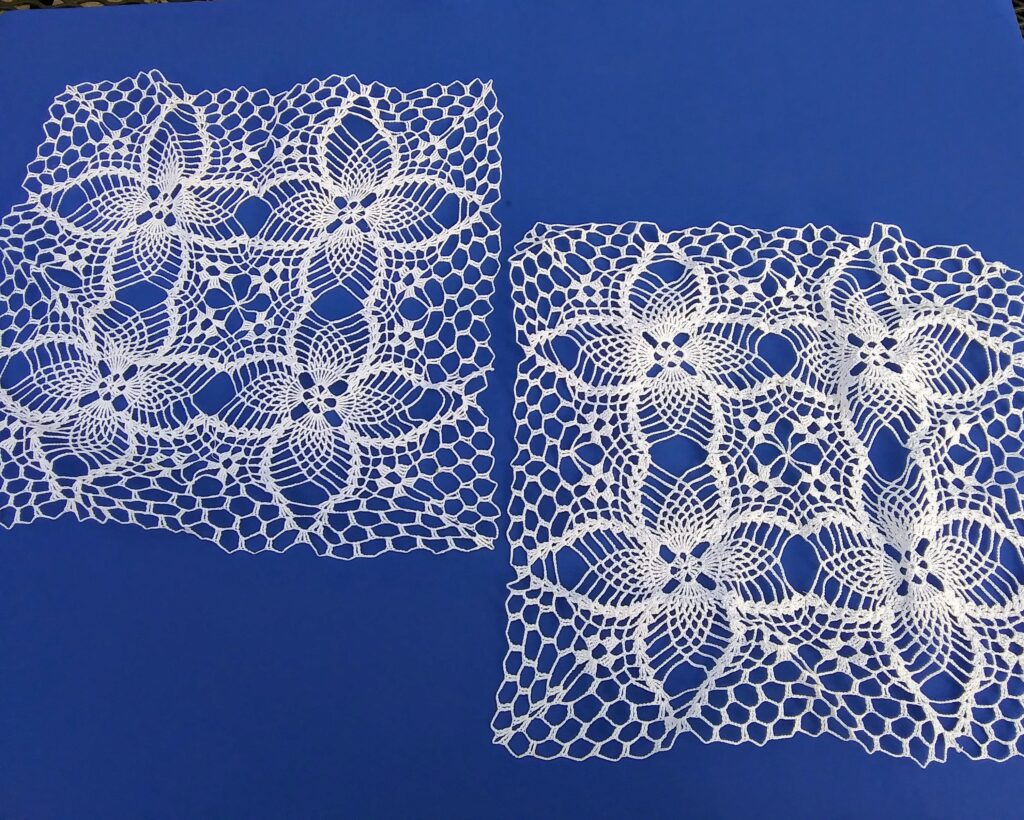Cleaning out some of the closets, I came across this collection of European lace pieces which were hidden under a bunch of linens.
I believe the pieces were made in Slovakia.

Description of Slovakian Lace
The four matching pieces are made with ivory colored thread and in a pattern of a flower with four petals.
The largest one measures 16 x 34-inches and would probably fit the top of a bedroom dresser or small table.

Brief History of Lace and Tatting
The history of lace and tatting shows it is an ancient Egyptian and also a 18th century Chinese craft. Some fishermen still use a type of knot and shuttle to mend their fishing nets.
Making lace is called tatting. Tatting requires few supplies other than a large needle, thread, and a shuttle. A variation of tatting is called cro-tatting and is made with a crochet hook.
European royalty wore clothing trimmed in lace so tatting became a popular hand craft in Europe.
European immigrants to the United States brought their lace crafting knowledge with them.
In the 19th century, American women’s magazines offered to their readers needlework, tatting, crocheting, knitting, and quilting patterns.
Lace making requires a tatting shuttle which has a small hook on one end. In the early 1900’s the shuttles were made of metal or ivory and were usually less then 3-inches in diameter.
Ending Comments and European Lace Blog
European lace is made into many different items and is not only for decorative doilies. Collars, earrings, necklaces, Christmas tree decorations, hair nets and pictures can be made of lace. Today crafters also use a variety of different colored thread.

Tatting takes more patience than Farmhouse Magic Blog has, but the results are so beautiful.
Handmade lace is beautiful, so no wonder it was favored by royalty.
Kansapedia, Wikipedia, and Victorian web sites were used to research today’s blog.

